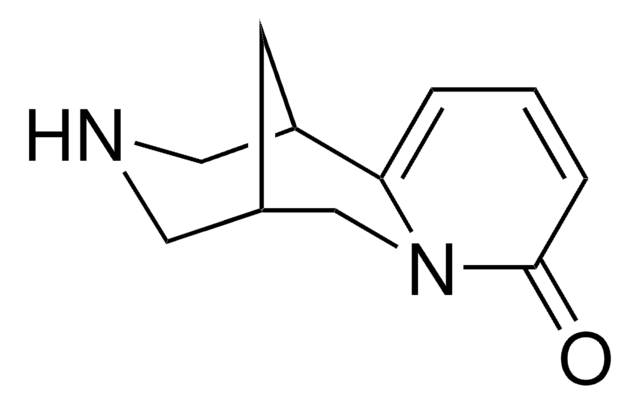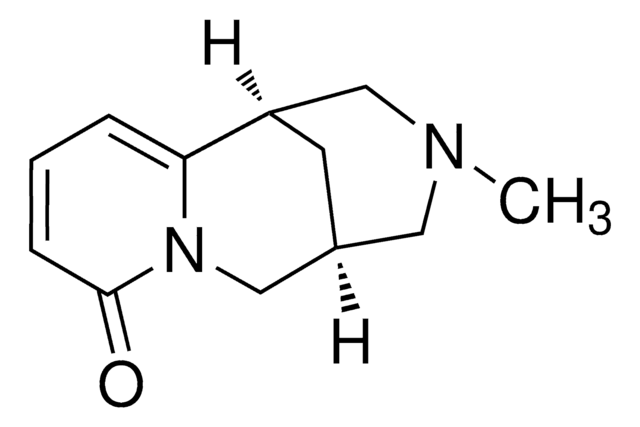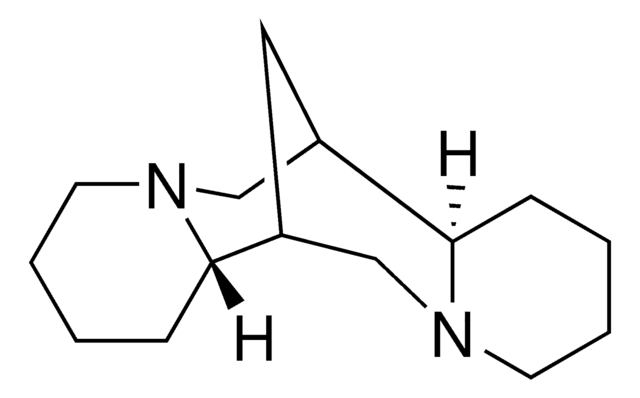C2899
Cytisine
≥99%, powder
Sinónimos:
(−)-Cytisine, (1R,5S)-1,2,3,4,5,6-Hexahydro-1,5-methano-8H-pyrido[1,2a][1,5]diazocin-8-one, (1S,9S)-3,11-Diazatricyclo[7.3.1.03,8]trideca-5,7-dien-4-one, Baptitoxin, Laburnin, Sophorine, Ulexine
About This Item
Productos recomendados
Ensayo
≥99%
Formulario
powder
color
light yellow
bp
218 °C/2 mmHg (lit.)
mp
154-156 °C (lit.)
cadena SMILES
O=C1C=CC=C2C3CNCC(C3)CN12
InChI
1S/C11H14N2O/c14-11-3-1-2-10-9-4-8(5-12-6-9)7-13(10)11/h1-3,8-9,12H,4-7H2/t8-,9+/m0/s1
Clave InChI
ANJTVLIZGCUXLD-DTWKUNHWSA-N
Información sobre el gen
rat ... Chrna2(170945) , Chrna3(25101) , Chrna4(25590)
¿Está buscando productos similares? Visita Guía de comparación de productos
Categorías relacionadas
Descripción general
Acciones bioquímicas o fisiológicas
Características y beneficios
Palabra de señalización
Danger
Frases de peligro
Consejos de prudencia
Clasificaciones de peligro
Acute Tox. 3 Dermal - Acute Tox. 3 Inhalation - Acute Tox. 3 Oral
Código de clase de almacenamiento
6.1C - Combustible acute toxic Cat.3 / toxic compounds or compounds which causing chronic effects
Clase de riesgo para el agua (WGK)
WGK 3
Punto de inflamabilidad (°F)
Not applicable
Punto de inflamabilidad (°C)
Not applicable
Equipo de protección personal
Eyeshields, Faceshields, Gloves, type P2 (EN 143) respirator cartridges
Elija entre una de las versiones más recientes:
¿Ya tiene este producto?
Encuentre la documentación para los productos que ha comprado recientemente en la Biblioteca de documentos.
Nuestro equipo de científicos tiene experiencia en todas las áreas de investigación: Ciencias de la vida, Ciencia de los materiales, Síntesis química, Cromatografía, Analítica y muchas otras.
Póngase en contacto con el Servicio técnico






